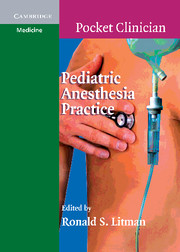Anterior Mediastinal Mass to Oncological Disease
from PART ONE - COEXISTING DISEASES
Published online by Cambridge University Press: 10 November 2010
Summary
BACKGROUND
▪ Most common cause: lymphoma
▪ Suspect in pts presenting for cervical mass biopsy.
▪ Other dxs: neuroblastoma, teratoma, germ cell tumor, bronchogenic cyst, foregut cyst, lymphangioma, mesenchymal tumor
▪ Symptoms due to compression of anatomic structures
▪ Symptoms worse when supine
▪ Symptoms may be relieved by lateral or upright position.
▪ Clinical: cough, hoarseness, dyspnea, wheezing, orthopnea, stridor, chest pain, syncope, SVC syndrome, tracheal deviation, retractions
▪ Asymptomatic or nonspecific: fever, fatigue, weight loss
PREOPERATIVE ASSESSMENT
▪ Preoperative radiation tx may interfere with accurate histologic dx & optimal tx regimens.
▪ Physical exam: orthopnea, tracheal deviation, jugular venous distention, wheezing, retractions, unilateral decreased breath sounds
▪ CXR: tracheal deviation, tracheal compression, abnormal cardiothymic silhouette
▪ Echo: direct compression of cardiac chambers and/or great vessels, pericardial effusion
▪ CT: assess severity & location of tracheal compression
▪ Preop sedation: avoid or give in monitored setting
▪ Antisialagogue (e.g., glycopyrrolate) useful
▪ Obtain IV access prior to OR, ideally in lower extremity.
▪ Correct preexisting dehydration or hypovolemia.
INTRAOPERATIVE MANAGEMENT
▪ Potential catastrophic airway or cardiovascular collapse during induction of anesthesia
▪ Monitors: std; A-line for great vessel or cardiac compression
▪ All sized endotracheal tubes and rigid bronch immed avail in OR
▪ For severe cases, ECMO or CPB stand-by
▪ Liberal fluid administration if great vessel/cardiac compression
▪ Position: semi-recumbent, sitting, or lateral
▪ Local anesthesia without sedation is safest strategy, but not feasible for small children.
[…]
- Type
- Chapter
- Information
- Pediatric Anesthesia Practice , pp. 2 - 28Publisher: Cambridge University PressPrint publication year: 2007

